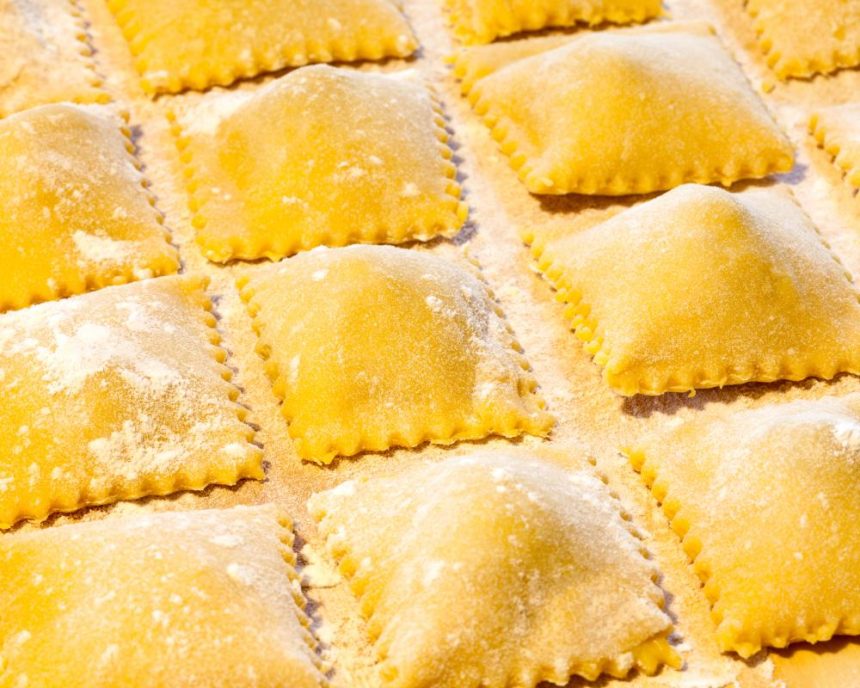On Monday night, Kelly planned to make dinner and spend the night inside with her family. Instead, she told her husband to put the kids to bed so she could get in the car, drive to Wegman’s and “panic buy” $100 worth of Rummo pasta.
Kelly, a 42-year-old product manager who lives outside Philadelphia, has celiac disease, which means that eating gluten triggers an immune response that leads to digestive issues. She saw fellow gluten-free people on Reddit and TikTok freaking out over the fact that the US is mulling a 107% tariff on Italian pasta imports. According to the Wall Street Journal, the hike could lead to those companies withdrawing from the US market as early as January.
That means American shoppers might not see their favorite brands in the Italian aisle come January – including Rummo, which Kelly and other celiacs claim makes the “best” gluten-free spaghetti, out of a corn and brown rice mixture. (Kelly did not want her last name used for fear of retaliation from Donald Trump supporters. Representatives for Rummo did not respond to a request for comment.)
“The idea of not having any pasta that I can safely eat and won’t cost an arm and a leg was a little terrifying,” Kelly said.
Despite the Trump administration’s many tariffs, this news hit harder for Americans who love Italian food. Cue fears of a pasta shortage. “I’m now a one issue voter,” the MSNBC host Chris Hayes wrote on X. “This is the attack on italians in the USA that conservatives *think* ‘cancelling columbus day’ is,” wrote a Reddit user. On TikTok, a user quoted Tony Soprano’s son, AJ: “So what, no fucking ziti now?”
Ninety-two per cent of the tax has been newly proposed by the US Department of Commerce (DoC), which alleges that Italian producers have been selling their pasta at unfairly low prices; the other 15% comes from the existing Trump tariff on European Union imports. The Wall Street Journal reported that Italy is responsible for $770m worth of annual pasta sales to the US.
However, the elimination of those sales would not necessarily make the food scarce stateside. “Most of the pasta sold in the United States is already domestically produced,” said Scott Laing, a clinical assistant professor of finance at the University at Buffalo School of Management.
Barilla’s blue-and-red boxes are ubiquitous in US grocery stores, where it has a 34% market share. That’s an Italian company with production factories in the US as well as Italy, so experts predict families will still be able to buy a $2 box of Barilla spaghetti come January. A representative for the company declined to comment to the Guardian, “since the matter is still under evaluation by the DoC”.
Those most likely to experience sticker shock are celiacs like Kelly, or pasta snobs who only buy premium imported items. “Maybe a $5.99 box of gluten-free pasta is going to become $11 or $12,” Laing said. “I don’t think most consumers are going to notice it.”
That is, as long as US producers do not use the tariffs as an excuse to raise their prices, too. “News stories are going around about the tariffs that are already starting to train consumers to think, ‘oh, pasta prices are going up,’ without realizing that the majority of their pasta isn’t actually an Italian import,” Laing said. “So the stores can raise their prices just a little bit, making this off-brand pasta box $1 more, even though there is no tariff on it.”
Scott Ketchum, who founded the US-produced, artisanal pasta brand Sfoglini, agreed that US manufacturers will “take advantage” of the news and slightly raise their prices. “That’s just business,” he said.
Sfoglini pasta prices are higher than most grocery store brands – a 12-ounce box goes for about $6 – due to its use of organic wheat pasta that’s imported from Italy. Ketchum says he’s already paying tariffs on that ingredient. “You never really know what Trump’s going to do until it’s done,” Ketchum said. “The tariffs on wheat were 10%, but then after negotiating, he actually increased them another 5%.”
As an Italian-American, Katie Gia eats a lot of pasta. “It’s a quick thing where I can reheat it, and that’s convenient,” she said. Gia, who is 29 and lives in Florida, has a gluten allergy. But she cannot afford to stock up on pasta like Kelly did. “Gluten-free pasta generally is also limited stock,” Gia said. “I’ll buy a couple bags of the brands I like, but I also know there’s a lot of other people who are going to want to do the same thing.”
The pasta tariff comes as grocery prices are rising for families across the country. The Yale Budget lab estimated in September that tariffs would cost households an extra $2,400 a year. Snap benefits have been delayed due to the government shutdown, leaving those who rely on food stamps hungry and anxious. Though Trump has angrily squashed concerns over the cost of living – telling reporters “inflation is way down” earlier this month – grocery prices have increased under his administration.
Kelly said she left plenty of boxes of her favorite gluten-free pasta on the shelves at her local Wegmans: “I did not completely clear it out.” And she understands that there are worse things going on in the world than missing out on spaghetti.
“I feel so petty saying, ‘but my pasta!’” Kelly said. “But when you have celiac disease, so much of your brain power is constantly consumed by food. What can I eat? What is safe? It’s a low-level anxiety that always hangs with you. The idea that a staple food you can eat might just go away is one more dig that we have to deal with.”









